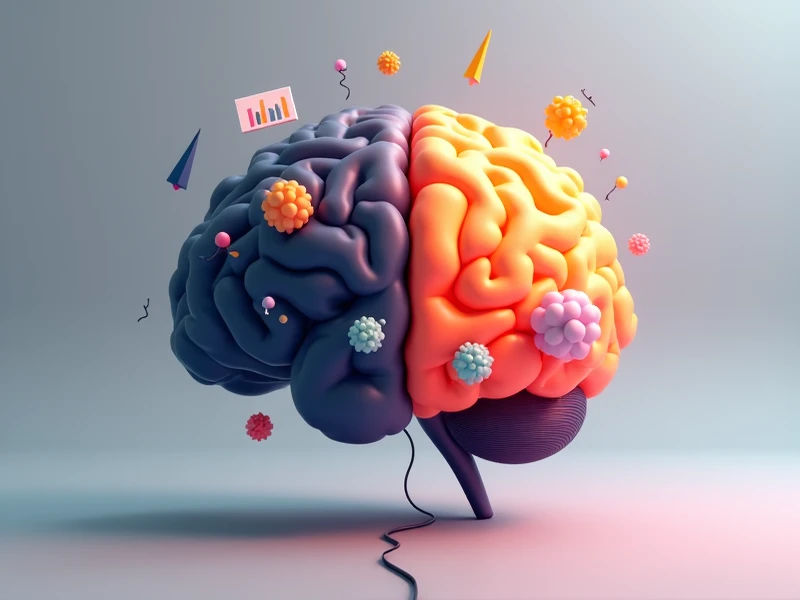CBT Conflict Resolution Worksheets: An Introduction

Conflict is an inevitable part of human interaction. Whether it’s a disagreement with a colleague, tension with a family member, or a misunderstanding between friends, conflicts can strain relationships and increase stress levels. Fortunately, there are effective approaches to manage these situations, and one particularly powerful method involves Cognitive Behavioral Therapy (CBT) techniques.
Conflict resolution refers to the process of addressing disagreements constructively to reach a mutually satisfactory outcome. It involves identifying the source of conflict, understanding different perspectives, and working collaboratively toward resolution. When conflicts remain unresolved, they can lead to chronic stress, anxiety, and deteriorating relationships.
Cognitive Behavioral Therapy is a structured, evidence-based psychological approach that examines the connection between thoughts, feelings, and behaviors. Originally developed to treat depression and anxiety, CBT has proven remarkably effective across a wide range of psychological challenges, including conflict management.

CBT conflict resolution worksheets are practical tools that apply cognitive behavioral principles to conflict situations. These worksheets guide individuals through a structured process of identifying negative thought patterns, challenging distorted thinking, and developing healthier responses to disagreements. They serve as a tangible resource for practicing new skills and tracking progress over time.
Understanding CBT for Conflict Resolution
What is CBT and How Does it Relate to Conflict?
CBT operates on the fundamental principle that our thoughts significantly influence our emotions and behaviors. During conflicts, automatic negative thoughts often arise, such as “”They never listen to me”” or “”This situation is hopeless.”” These thoughts trigger emotional responses like anger or frustration, which then drive unhelpful behaviors like shouting or withdrawing.
The core principles of CBT include identifying automatic thoughts, examining the evidence for and against these thoughts, and developing more balanced alternatives. In conflict situations, CBT helps individuals recognize when they’re catastrophizing or making unfair assumptions about others’ intentions.
When applied to conflict resolution, CBT creates awareness of the cognitive processes that escalate tensions. By understanding this thought-emotion-behavior connection, individuals can intervene at the thought level, creating a domino effect that improves emotional responses and behavioral choices during disagreements.
Benefits of Using CBT in Conflict Resolution
Implementing CBT techniques through conflict resolution worksheets offers numerous advantages. First, these tools enhance communication skills by promoting active listening and clear expression of needs without blame or criticism. They encourage the use of “”I”” statements rather than accusatory “”you”” language, which reduces defensiveness in others.
Another significant benefit is improved emotional regulation during heated moments. CBT techniques help individuals recognize emotional triggers and implement calming strategies before responding impulsively. This emotional management is crucial for productive conflict resolution.
CBT approaches also foster empathy by encouraging perspective-taking exercises. Understanding others’ viewpoints—even when we disagree—creates space for compromise and mutual respect. This empathetic stance can transform adversarial interactions into collaborative problem-solving sessions.
Perhaps most importantly, CBT conflict resolution worksheets can significantly reduce the stress and anxiety associated with disagreements. As individuals become more confident in their ability to navigate conflicts constructively, their anxiety about confrontation typically diminishes. Many find this benefit extends to other areas where worksheets for anxiety management may be helpful.
Common Cognitive Distortions in Conflict Situations
During conflicts, our thinking often becomes distorted in predictable ways. These cognitive distortions act as mental filters that skew our perception and intensify negative emotions. Recognizing these patterns is the first step toward more balanced thinking.
All-or-nothing thinking frequently emerges during disagreements. Phrases like “”You always interrupt me”” or “”You never consider my needs”” reflect this black-and-white perspective. Such absolute statements rarely reflect reality and typically escalate tensions.
Personalization is another common distortion where individuals assume others’ actions are deliberately targeted toward them. For example, interpreting a colleague’s brief email as evidence they’re angry, when they might simply be busy. This misinterpretation creates unnecessary tension.
Mind-reading occurs when we assume we know what others are thinking without sufficient evidence. During conflicts, individuals often believe they understand others’ motivations without asking clarifying questions, leading to misunderstandings and defensive reactions.
CBT conflict resolution worksheets specifically target these distortions by encouraging individuals to gather evidence, consider alternative explanations, and develop more balanced interpretations of events. This cognitive restructuring forms the foundation of effective conflict management.
Utilizing CBT Conflict Resolution Worksheets
Types of Conflict Resolution CBT Worksheets
A variety of specialized worksheets exist to address different aspects of conflict resolution. Thought record worksheets form the cornerstone of CBT for conflict resolution. These documents guide users through identifying triggering situations, recording automatic thoughts, noting associated emotions, examining evidence, and creating balanced alternative perspectives.
Communication skills worksheets focus on expression and listening techniques. They might include exercises for practicing assertive communication, formulating clear “”I”” statements, and developing active listening skills. These worksheets often provide templates for difficult conversations and space to rehearse responses to challenging scenarios.
Problem-solving worksheets guide individuals through a structured approach to resolving disagreements. They typically include sections for clearly defining the problem, brainstorming multiple solutions without judgment, evaluating options objectively, and creating an implementation plan. This systematic approach prevents the common pitfall of jumping to solutions before fully understanding the problem.
Emotion regulation worksheets help manage the intense feelings that often arise during conflicts. These tools guide users through identifying emotional triggers, recognizing physical signs of escalating emotions, and implementing specific techniques to maintain composure. BrainTalking’s approach emphasizes the importance of emotional regulation as a prerequisite for effective conflict resolution.
How to Effectively Use Conflict Resolution CBT Worksheets
To maximize the benefits of CBT conflict resolution worksheets, follow these practical guidelines. First, set aside dedicated time in a quiet environment to complete the worksheets thoughtfully. Rushing through the process diminishes its effectiveness.
Begin with honest self-reflection. The worksheets are tools for personal growth, not opportunities to further justify your position or blame others. Challenge yourself to identify your contribution to the conflict, even when it feels uncomfortable.
Apply the worksheets to real-life situations. While hypothetical scenarios can be helpful for practice, using conflict resolution cbt worksheets for actual disagreements provides the most valuable learning. Start with lower-stakes conflicts before applying the techniques to more emotionally charged situations.
Review completed worksheets periodically to identify patterns in your thinking and behavior. This retrospective analysis often reveals recurring thought distortions or emotional triggers that warrant additional attention. Over time, you’ll likely notice improvements in how you approach and resolve conflicts.
Consider sharing your insights with a trusted friend or therapist who can provide feedback and additional perspectives. Sometimes, others can spot thinking patterns we miss in ourselves.
Finding and Accessing CBT Conflict Resolution Worksheets
Numerous resources exist for those seeking quality cbt conflict resolution worksheets. Mental health organizations like the American Psychological Association and Psychology Today offer free downloadable worksheets on their websites. These resources typically include basic thought records and communication exercises.
Therapists specializing in CBT often create customized worksheets for their clients based on specific conflict patterns. Working with a professional ensures the worksheets address your unique challenges and provides guidance on completing them effectively.
Online therapy platforms have expanded access to CBT resources, including conflict resolution worksheets. Many services offer comprehensive worksheet libraries as part of their subscription packages, along with therapist guidance on implementation.
Resources like anxiety solutions cbt mentioned in our reference material offer specialized worksheets combining anxiety management with conflict resolution techniques—particularly valuable since conflict often triggers anxiety responses. Similarly, conflict resolution cbt worksheets can be found through professional psychology resource centers and educational institutions.
Long-term Strategies for Conflict Resolution with CBT
Developing long-lasting conflict resolution skills requires integrating CBT principles into daily life beyond worksheet exercises. Start by practicing thought challenging in everyday situations, not just during conflicts. This habit-building approach makes balanced thinking your default response when disagreements arise.
Maintain a conflict journal to document triggers, responses, and outcomes. This ongoing record helps identify patterns and track improvement over time. Many individuals find that recurring conflicts often stem from similar underlying issues that, once addressed, significantly reduce future disagreements.
Consider seeking professional guidance from a CBT therapist who specializes in relationship dynamics or conflict management. A therapist can provide personalized strategies and offer feedback on your progress with the worksheets. They can also help address deeper patterns that might be fueling recurrent conflicts.
Emotional intelligence plays a crucial role in successful conflict resolution. As noted by Renee Mill from anxiety solutions cbt, emotion regulation forms the foundation for effective problem-solving. Developing skills like self-awareness, empathy, and impulse control complements the cognitive restructuring work of CBT, creating a comprehensive approach to managing disagreements.
Remember that becoming skilled at conflict resolution is a journey, not a destination. Even individuals with excellent conflict management skills occasionally struggle with difficult situations. The goal isn’t perfection but consistent improvement in how you approach and resolve differences.
The Role of CBT Conflict Resolution Worksheets in Relationships
CBT conflict resolution worksheets can transform not only individual approaches to disagreements but entire relationship dynamics. In romantic partnerships, these tools establish a common language and framework for addressing differences. Couples who regularly use CBT techniques often report feeling more understood and less defensive during discussions.
In family settings, cbt for conflict resolution can break intergenerational patterns of unhealthy communication. Parents who model and teach these skills to children provide them with valuable emotional resources that benefit them throughout life. The structured nature of conflict resolution cbt worksheets makes them particularly effective for teaching these concepts to younger family members.
Workplace environments also benefit significantly from CBT-based conflict resolution approaches. Teams that implement these strategies typically experience improved collaboration, reduced tension, and more innovative problem-solving. Human resource professionals increasingly incorporate these techniques into workplace training programs.

Takeaways: Implementing CBT Conflict Resolution Techniques
- Recognize that thoughts drive emotions and behaviors during conflicts
- Identify and challenge cognitive distortions that escalate disagreements
- Use structured worksheets to develop more balanced thinking patterns
- Practice active listening and assertive communication skills
- Develop emotion regulation strategies for maintaining composure
- Apply CBT techniques consistently across different relationship contexts
- Consider professional guidance for persistent conflict patterns
Q&A: Common Questions About CBT Conflict Resolution Worksheets
Q: How long does it typically take to see results when using CBT conflict resolution worksheets?
A: Many individuals notice improvements within 2-4 weeks of consistent practice with CBT conflict resolution worksheets. Initial changes typically include greater awareness of automatic thoughts and emotional triggers during disagreements. More substantial changes in communication patterns and conflict outcomes often emerge after 6-8 weeks of regular worksheet use. However, progress depends on several factors, including the complexity of the conflicts being addressed, consistency in applying the techniques, and willingness to examine one’s own contribution to disagreements. BrainTalking experts recommend viewing conflict resolution as an ongoing skill development process rather than seeking a quick fix.



